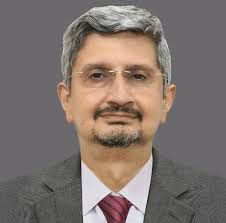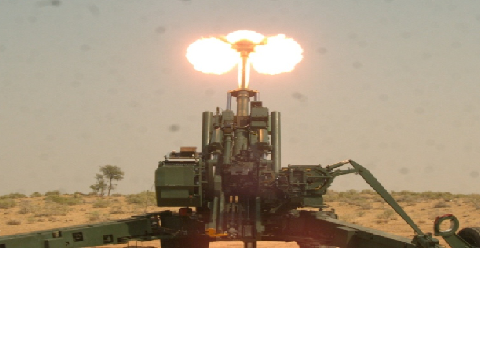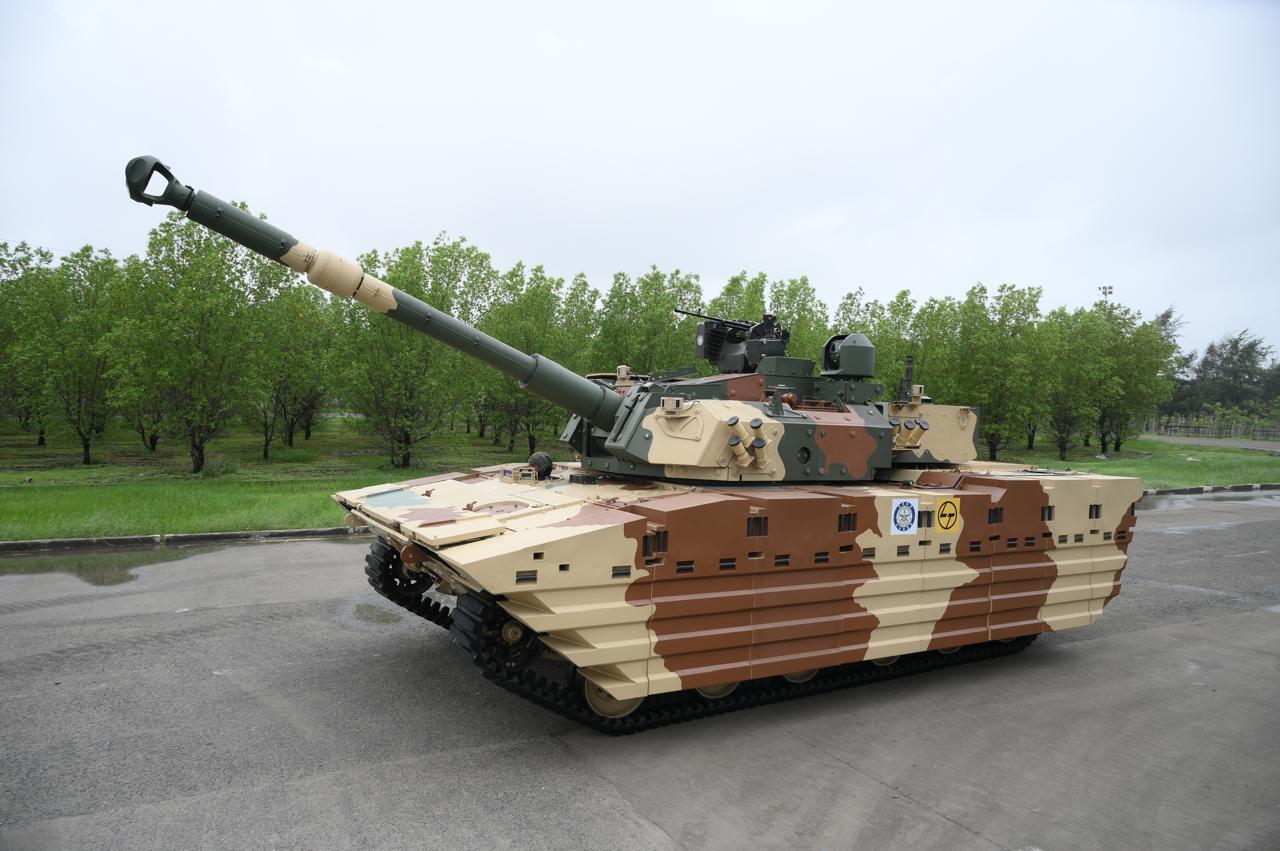“DRDO is increasingly involving industries in system development”- Dr Samir Kamat, Chairman DRDO

As we are approaching towards the Aero India 2025, Rohit Srivastava, editor, IDI, met with Dr. Samir Kamat, Secretary defence research and Chairman Defence Research and Development Organisation and discussed with him various undergoing development projects, policies and associated issues. Some excerpts.
IDI – DRDO developed products and technologies are handed over to Indian industry periodically. How have these technology transfer contributed over these years?
Kamat – DRDO undertakes design and development of products for use by Indian Armed Forces. After successful product trial and evaluation, the technology of the same is transferred to Indian industries for mass production by signing a Licensing Agreement for Transfer of Technology (LATOT). This has catalyzed the growth of defence manufacturing sector through its technology risk mitigation and technology enablement.
Presently, DRDO developed technologies are being transferred to wide spectrum of industries, creating a viable industrial ecosystem, including MSMEs, for sustained industrial growth in Defence sector. This facilitates industries by lowering the entry barrier to defence vertical, known for its high standards and extensive certification and trials. This has enhanced self-reliance as well as created more opportunities for industries to meet the demand of Indian Defence Forces, commercial market and export. The induction of many key defence systems and platforms such as Missiles, LCA, Electronic Warfare Systems, Armaments and Engineering systems are the testimony of these industrial ecosystem created by DRDO. Our low cost but enabling technology transfer program has catalyzed the creation of a robust, self-reliant defence manufacturing ecosystem in India, paving the way for long-term national security and economic growth.
IDI – What is your assessment of Indian Private Industry’s capability viz-a-viz public sector. Do they need to compete or should they cooperate ?
Kamat – Defence industry was opened for private sector participation to provide more impetus to indigenous manufacturing. Private sector companies in India have played a significant role in the country's defence production. Private participation in Defence manufacturing plays a crucial role in enhancing the capability and competitiveness. Even though competition is important, these sectors should also cooperate to further the goals of Aatmanirbhar Bharat and strengthen the country’s defence capabilities. The rapidly expanding requirements and size of the sector would indicate the need to synergize and specialize, rather than to only compete.
Defence industry was opened for private sector participation to provide more impetus to indigenous manufacturing. Private sector companies in India have played a significant role in the country's defence production. They play a crucial role in enhancing capability and competitiveness. Even though competition is important, these sectors should also cooperate to further the goals of Aatmanirbhar Bharat and strengthen the country’s defence capabilities.
The rapidly expanding requirements and size of the sector would indicate the need to synergize and specialize, rather than to only compete. The groundwork for collaboration has already been laid through various initiatives like development of Defence Industrial Corridors, focus on collaboration across various stakeholders, creation of DRDO-Industry Interaction Group (IIG) etc. to encourage broader participation of the private sector. By working together, both can co-develop critical defence technologies, and bolster India’s competitiveness and position as a global defence manufacturing hub.
IDI – World over military product are developed by the manufacturers, whereas DRDO develop products, not technology like DARPA. Wouldn’t it be better if industry develops products and DRDO focus on future technologies?
Kamat – We should not compare DRDO to Defense Advanced Research Projects Agency (DARPA) of USA as the two organizations have distinct mandates due to the two nations being in different states of development. Both are premium research organizations in India and USA, with both doing research on emerging defence technologies. DRDO defines, designs and delivers end-to-end defence systems, meeting the immediate needs of India’s armed forces, while also fostering the development of critical and futuristic defence technologies. On the other hand, DARPA only has to do the later as US industry can do the former. Thus DARPA operates primarily as a funding agency without laboratories or research staff. All research is conducted through contracts with universities, industry, and other government R&D institutions.
Since Indian defence industrial ecosystem is still nascent, DRDO plays a pivotal role in bridging the gap by defining, designing, developing and testing systems and transferring technologies to industries, enabling them to get into production with lower NRE (Non-Recurring Engineering) cost and risk. This model ensures that India meets its defence needs while strengthening its industrial base. We are already taking steps to emphasize future technologies. Initiatives like the Technology Development Fund (TDF) and DRDO-Industry-Academia Centres of Excellence (DIA-CoE) promote research in 82 defence related areas, including emerging areas such as hypersonic systems, artificial intelligence, and quantum technologies. DRDO is increasingly involving industries in system development through mechanisms like Development-Cum-Production Partner (DcPP) and technology transfer policies.
However, developing products by industries and DRDO focusing only on future technologies is not feasible in the present Indian scenario. A balanced approach is a good idea in the way forward. We must continue its dual focus and delivering critical systems while fostering advanced research and development.
IDI – EW has emerged as a strategic technology. They are now considered as part of non-nuclear deterrence capability which in many ways are as significant as nuclear capability. Where do we stand in EW capability in world?
Kamat – The present day EW systems have demanding requirements for the use of Armed Forces on land, air, sea, and also in space. Threats are becoming more agile, varied, elusive and fast changing, thereby putting pressure on design capabilities and capacities for all the various technologies for EW systems. DRDO has successfully developed many advanced EW systems. It is an important expertise and DRDO has made country self-sufficient in the this critical component of modern warfare e.g. Under Navy’s EW programme ‘Samudrika’, DRDO has developed seven Electronic Warfare (EW) systems, which includes three ship-borne systems (Shakti, Nayan & Tushar) and four air-borne systems (Sarvadhari, Sarang, Sarakshi & Nikash). Advanced Electronic Warfare (EW) System ‘Shakti’ has been designed and developed for Indian Navy for the interception, detection, classification, identification and jamming of conventional and modern Radars. This has created a growing ecosystem of DRDO, academia and industry for carrying out quality research and development on multiple technologies and products simultaneously under the leadership of DRDO.

IDI – Could you give us some details about the ATAG project? When can we see it joining Indian army’s stable?
Kamat – The Advanced Towed Artillery Gun System (ATAGS) is an indigenous weapon system developed by DRDO under Prime Minister’s ‘Make in India’ initiative. Armament Research and Development Establishment (ARDE), a Pune based premiere R&D establishment of DRDO is the nodal agency for design and development of ATAGS with industry partners namely Bharat Forge Limited and Tata Power SED. ATAGS has excellent accuracy, consistency, mobility, reliability and automation and is capable of achieving 47 plus km range. The armament system of the ATAGS which comprises 52 calibre Gun Barrel with Breech Mechanism, Muzzle Brake and Recoil System has been designed and developed to fire the 155 mm calibre ammunitions held by Army with enhanced range, accuracy and precision as well as greater fire power. The system is configured with All Electric Drive technology for the first time in the world that will ensure maintenance free and reliable operation over longer periods of time.
While discussions regarding its induction are ongoing, Defence Acquisition Council (DAC) has already accorded Acceptance of Necessity (AoN) for 307 nos. of ATAGS for procurement Acquisition Council (DAC). Therefore, it is absolutely appropriate to mention that ATAGS, in full sense, commensurate with the idea and effectiveness of both ‘Make in India’ and ‘Atmanirbhar Bharat’ inititives of the Government of India. DRDO is actively engaging with stakeholders to accelerate its deployment. We are optimistic about its induction into the Indian Army soon, as it is not only a technological achievement but also a testament to the potential of India’s defence manufacturing ecosystem.
IDI – When can we see AMCA flying. What is its current status. Where will you place it in comparison to Chinese, Korean and Turkish 5th Gen fighters?
Kamat – The Advanced Medium Combat Aircraft (AMCA) fighter is India's first 5.5 Gen stealth aircraft. It will be India's first stealth fighter, equipped with cutting-edge features. India is among the very few nations to develop stealth aircraft. We are hopeful that these products will get into service and that our country will become self-reliant very soon.
AMCA is truly is a world class fighter. India will be one of the few countries that will be able to define, design and develop stealth aircraft. We have now started the development process, as the definition and design is complete. We hope to complete development trials of AMCA by 2034, and we are hopeful that it should get inducted by 2035. It will be a proud moment when development is complete.

IDI – When can we see the Light Tank entering service? What is its status of trial?
Kamat – The Indian Light Tank (ILT) is being developed by the Combat Vehicles Research and Development Establishment (CVRDE), a unit of DRDO, in collaboration with Larsen and Toubro Ltd. Various other industries, including micro, small, and medium enterprises (MSMEs), are associated with the development of sub-systems of this tank.
DRDO has successfully conducted the preliminary automotive trials of this Indian light Tank Zorawar, a highly versatile platform capable of deployment in high-altitude areas. During the field trials conducted in the desert terrain, the Light Tank demonstrated exceptional performance, efficiently meeting all the intended objectives. In the initial phase, the tank’s firing performance was rigorously evaluated and it achieved the required accuracy on designated targets. This was a significant milestone towards India's goal of self-reliance in critical defence systems and technologies.
Recently, in Dec 2024, the light tank achieved a major milestone by firing a number of rounds at different ranges at an altitude of more than 4200 m, at a High Altitude Location with consistently accurate results. The airlift capability of the tank was also demonstrated by the Indian Air Force. Such a capability would assist in quick deployment of ILT in operating conditions which are remote and difficult to access through road or rail. With these two phases of internal performance trials, which were actively supported by the Indian Army and the Indian Air Force, ILT would be undergoing some more trials before being offered for User trials.
ILT is being designed as a 25-ton class armoured fighting vehicle to meet the requirements of the Armed Forces for High altitude applications. In an integrated manner, the design to realisation to demonstration at high altitude has been achieved in three years.
IDI – Finally, in brief, if you could discuss the ongoing DRDO’s drones programmes?
Kamat – DRDO has made substantial strides in developing a comprehensive counter-drone system, as well as focusing on the advancement of high-endurance Unmanned Aerial Vehicles (UAVs). DRDO has already carried out successful flight trial of Autonomous Flying Wing Technology Demonstrator, an indigenous high-speed flying-wing UAV. With this, India joined elite club of countries to have mastered the controls for flying wing technology in tailless configuration. The maiden flight of this aircraft was demonstrated in July 2022, followed by six flight trials in various developmental configurations using two in-house manufactured prototypes. These flight-tests led to achievements in development of robust aerodynamic and control system; integrated real-time and hardware-in-loop simulation, and state-of-the-art Ground Control Station. The aircraft prototype, with a complex arrowhead wing platform, is designed and manufactured with light-weight carbon prepreg composite material developed indigenously.
Archer UAV is being developed by DRDO The indigenously developed short-range UAV, represents a versatile solution capable of fulfilling the demands of both intelligence, Surveillance, Target Acquisition and Reconnaissance (ISTAR) as well as armed operational roles. Its operational capability include the Altitude of 22000 ft, Endurance 12 Hrs, Range 220 Km with autonomous take-off and landing capability on short, semi-paved runways. BEL is the industry partner with DRDO for Archer UAV development.
“DRDO is increasingly involving industries in system development”- Dr Samir Kamat, Chairman DRDO




